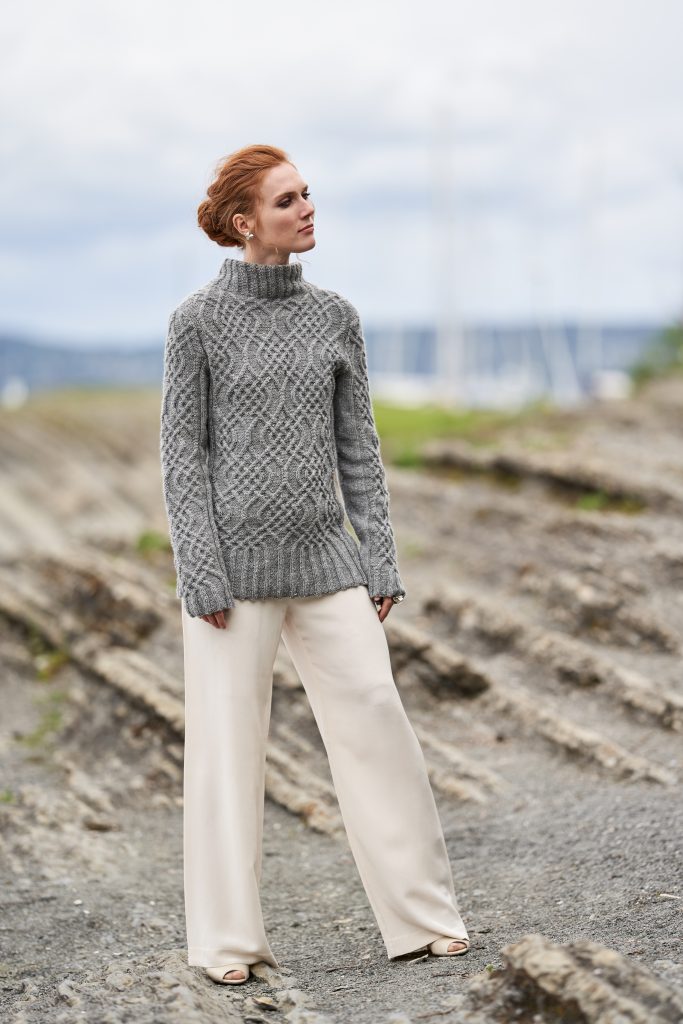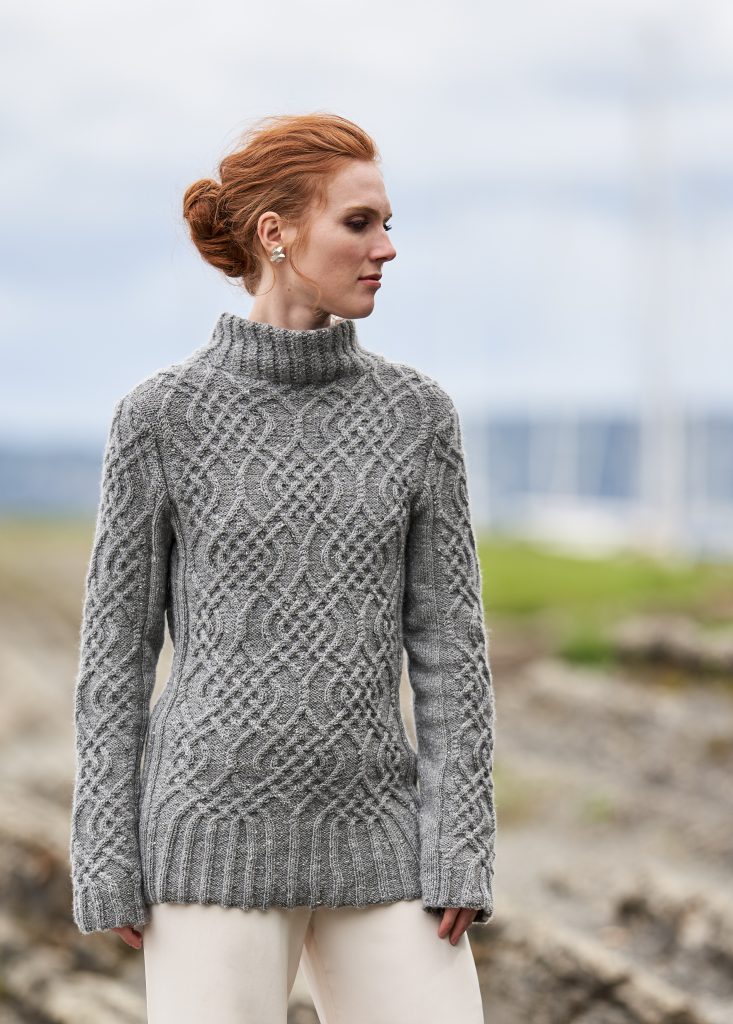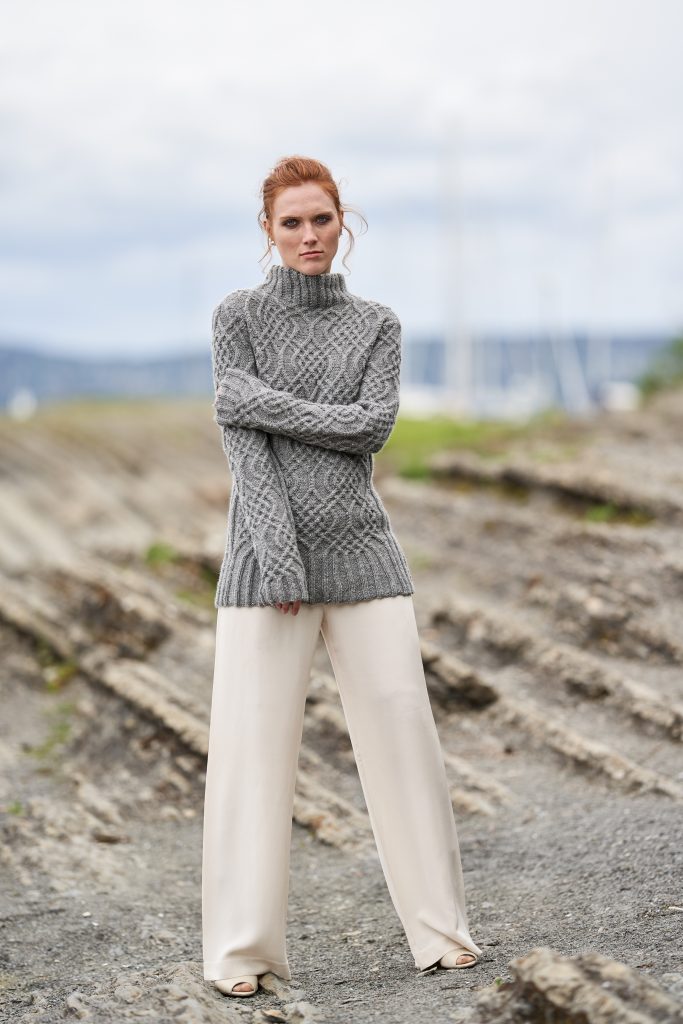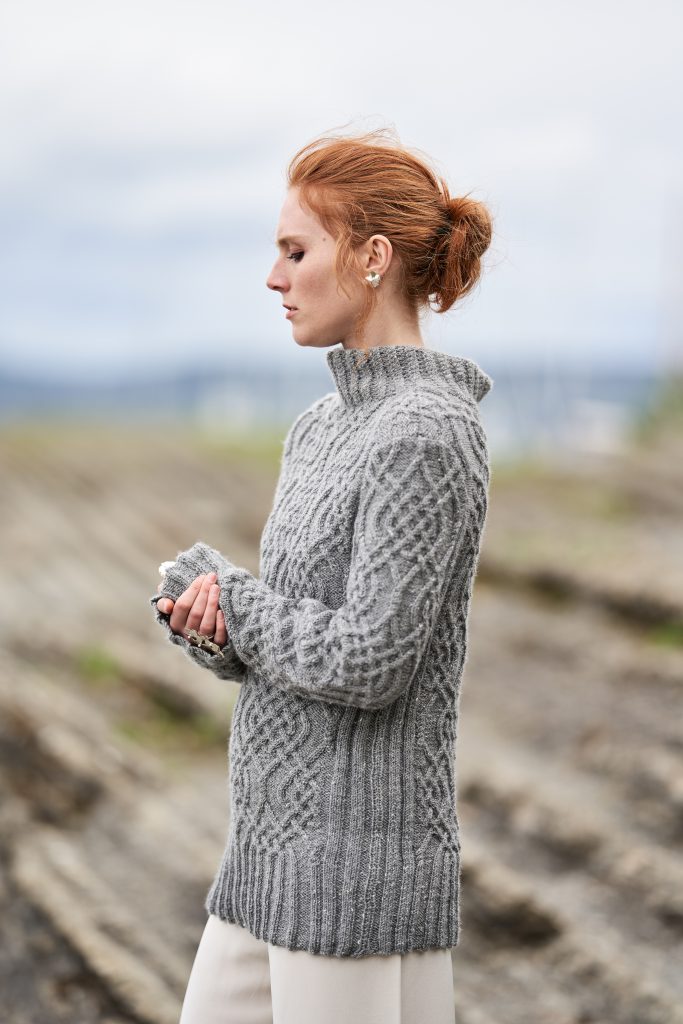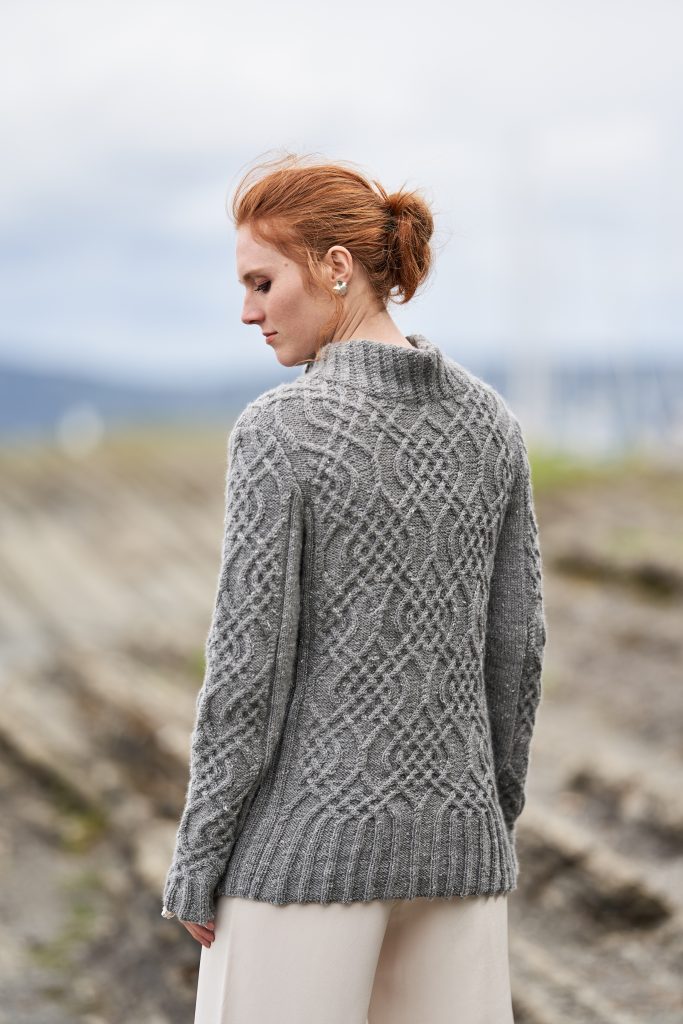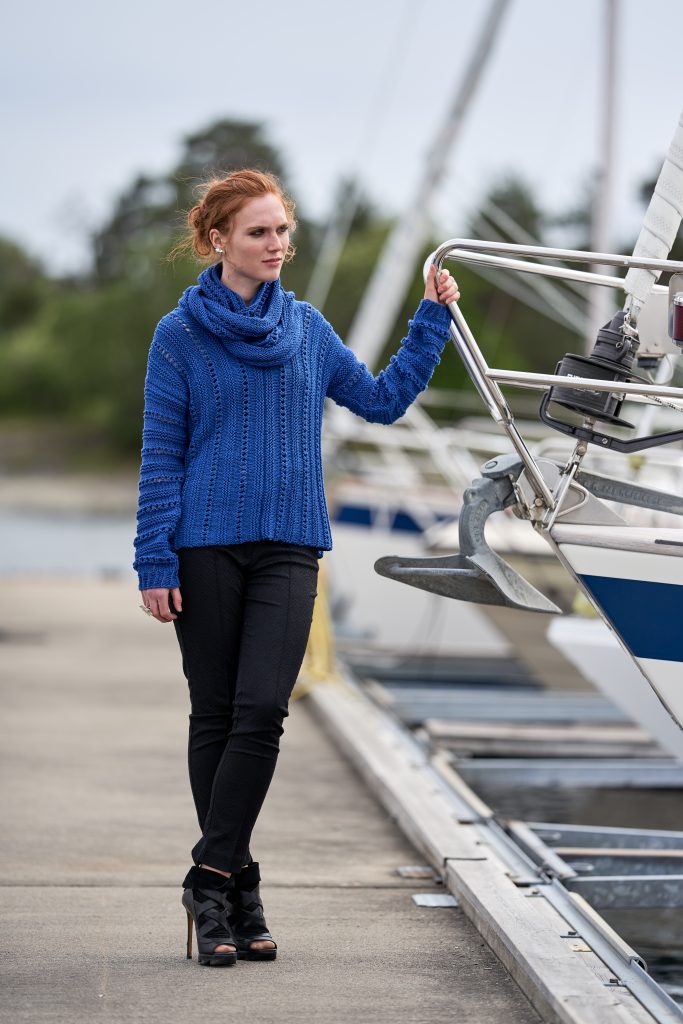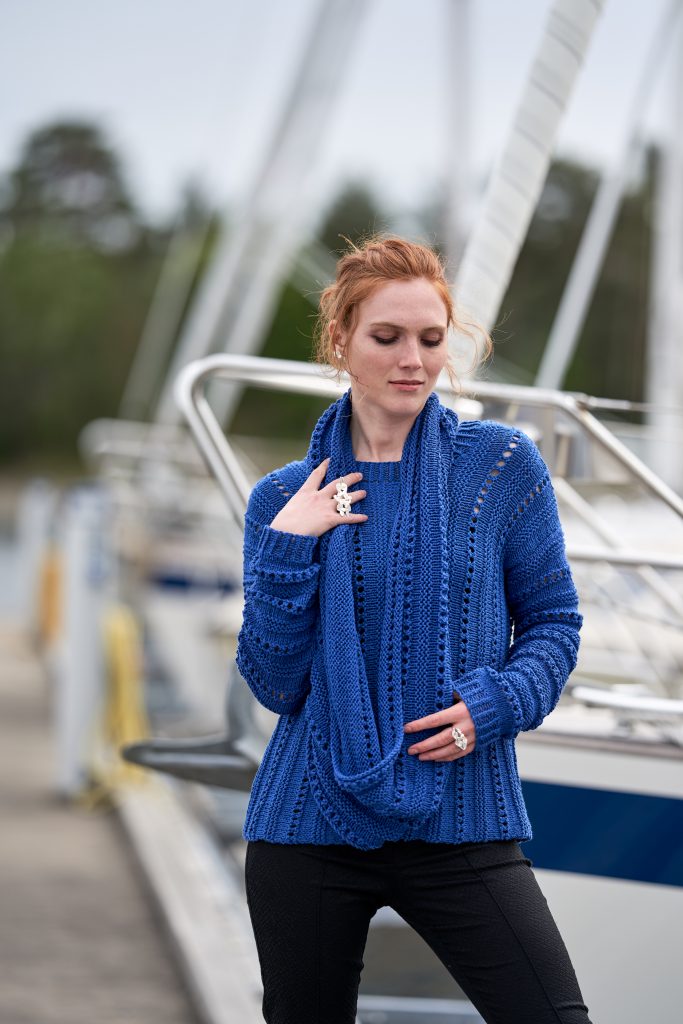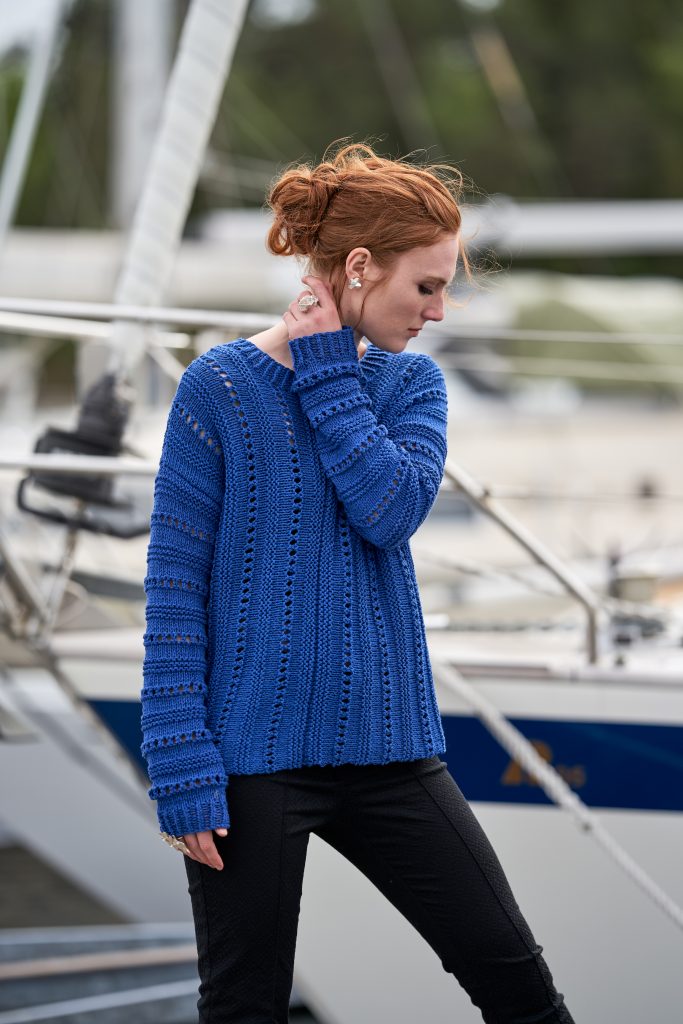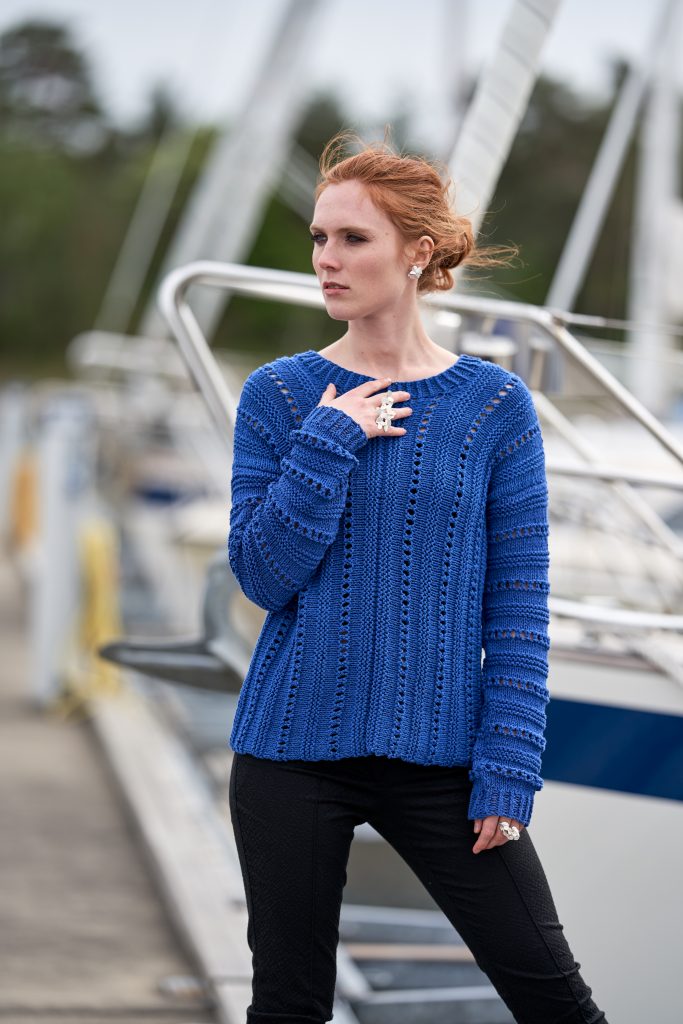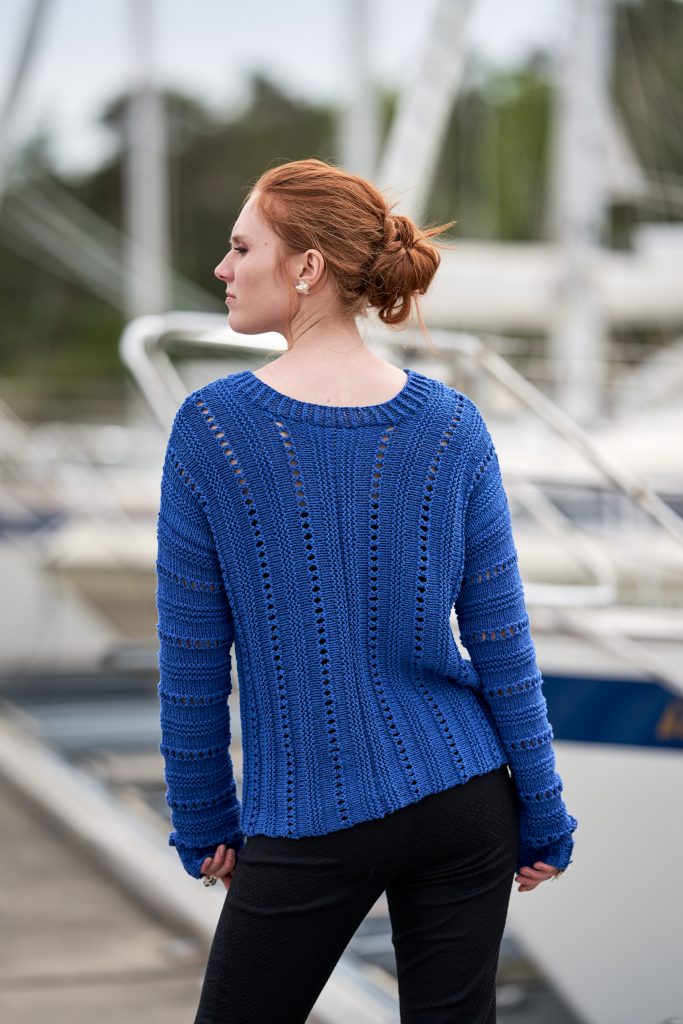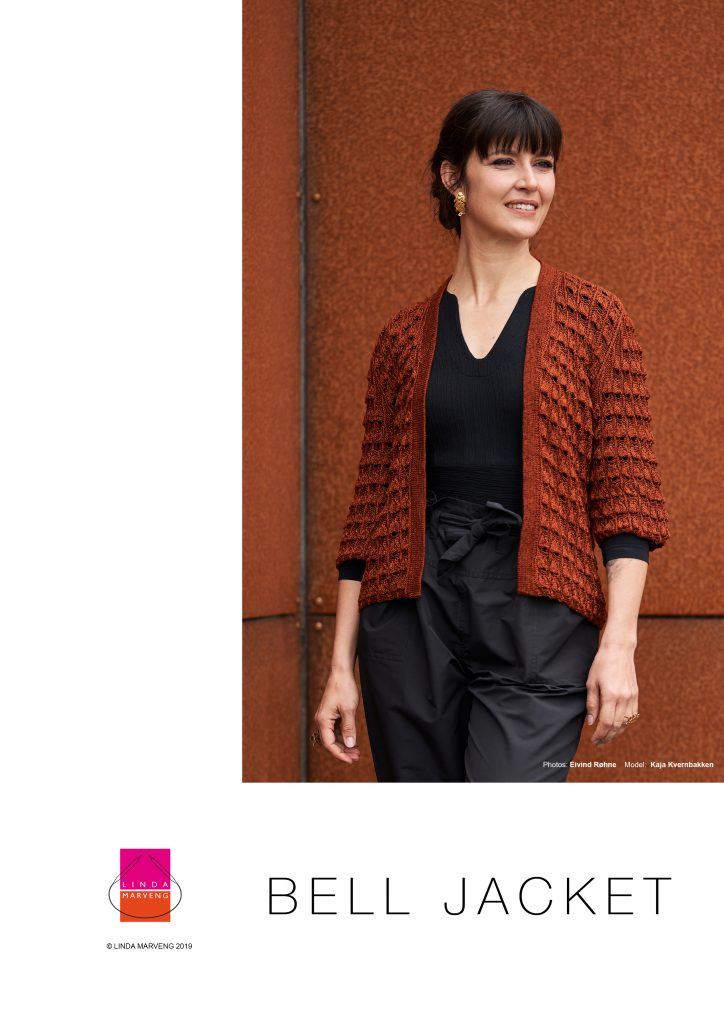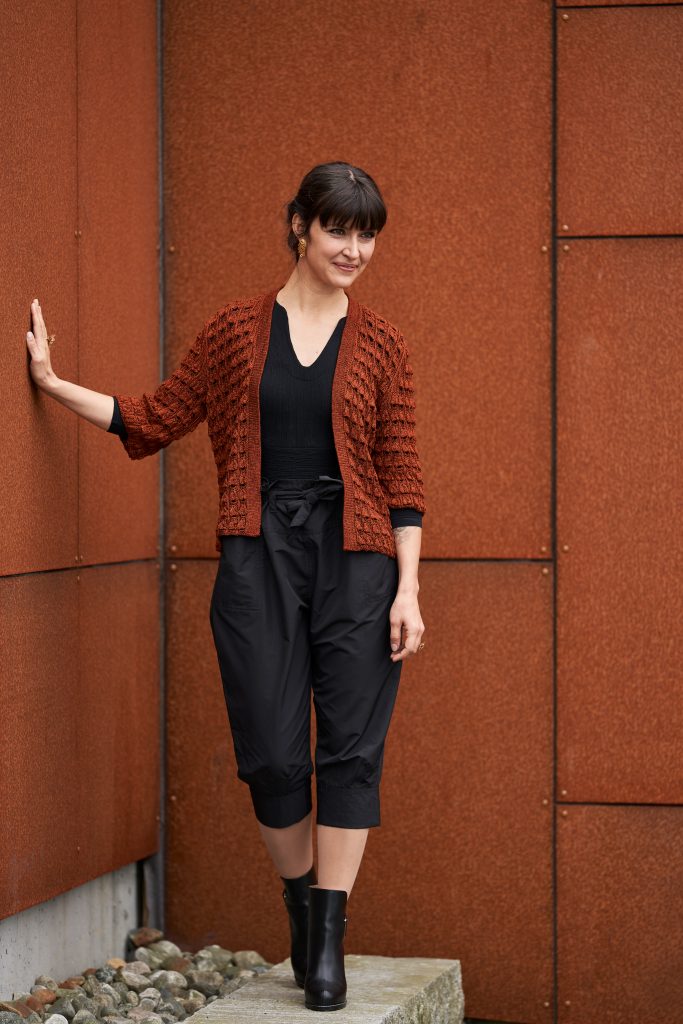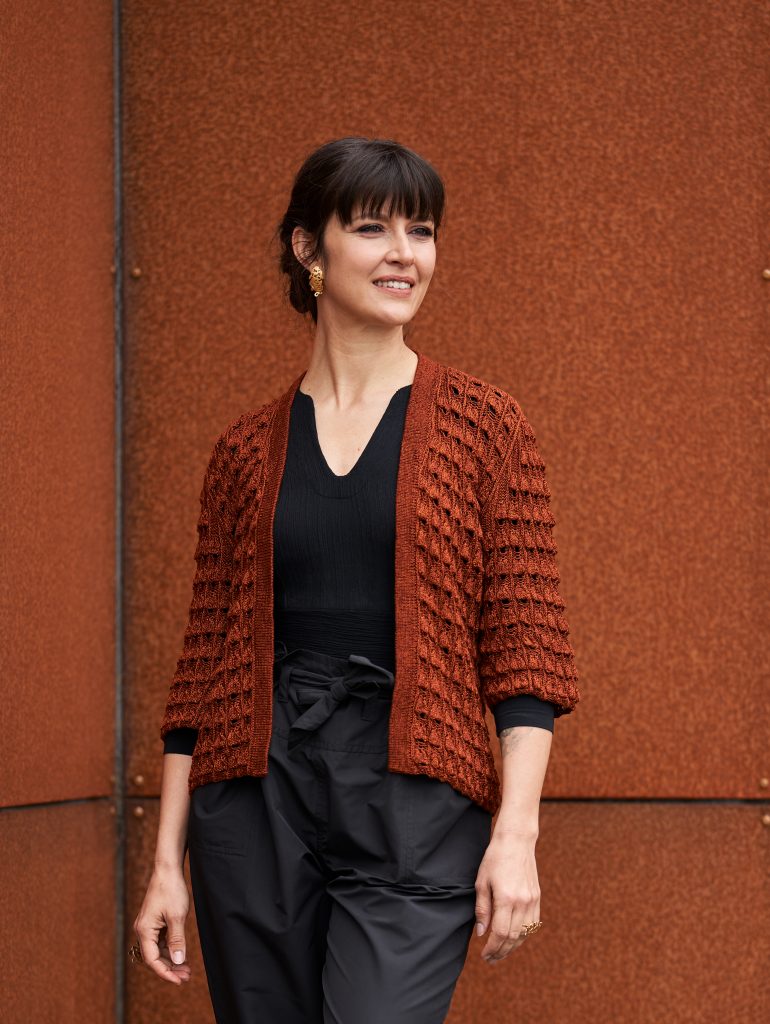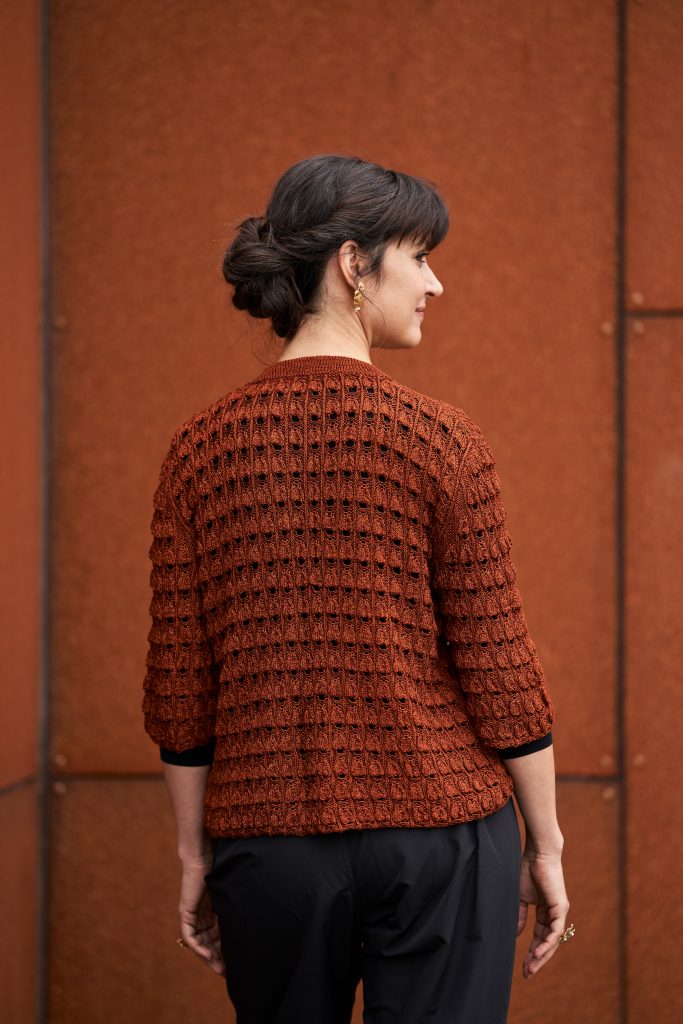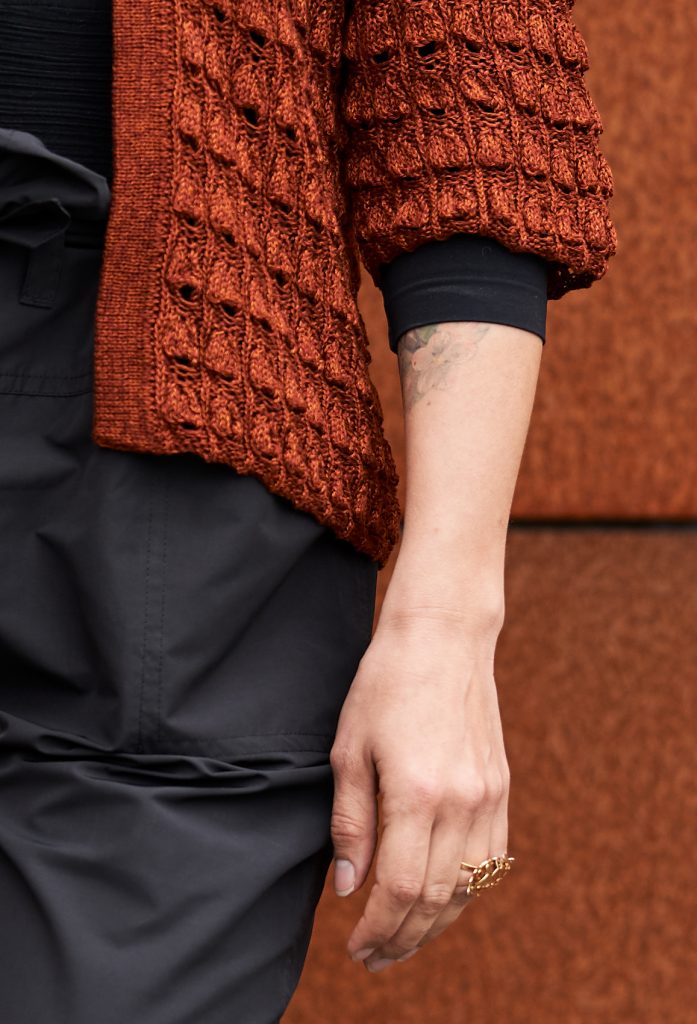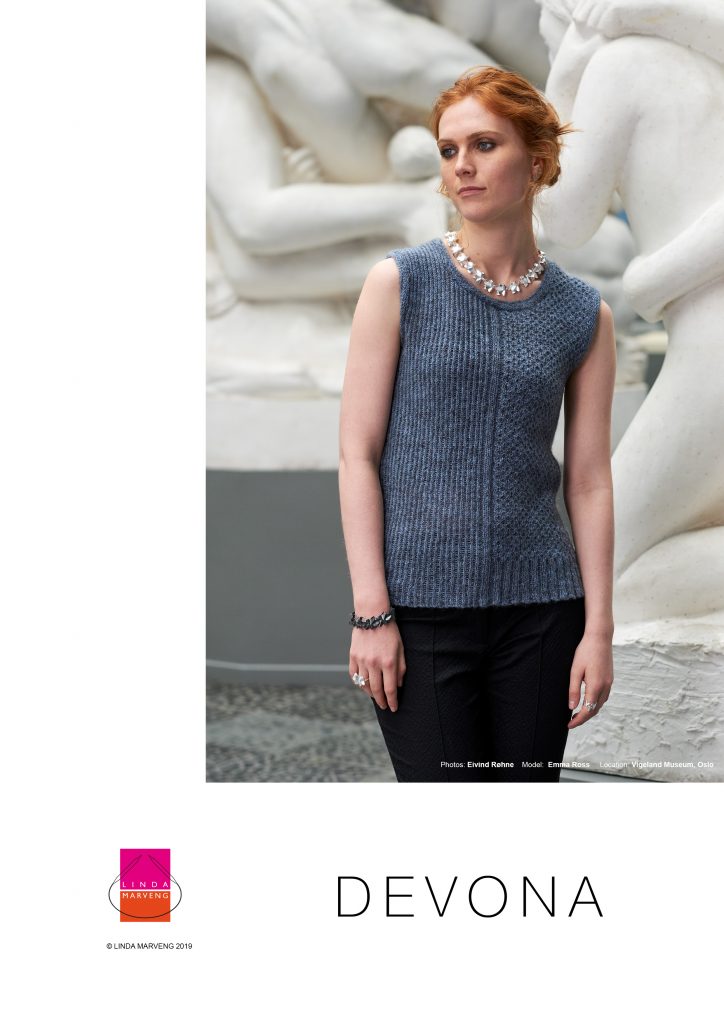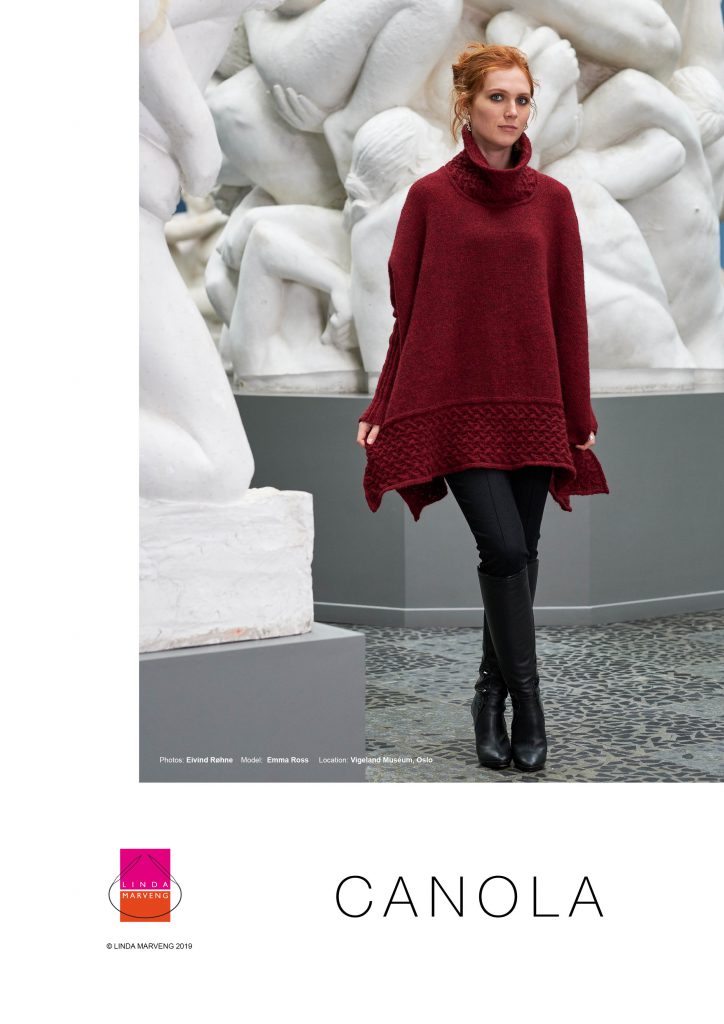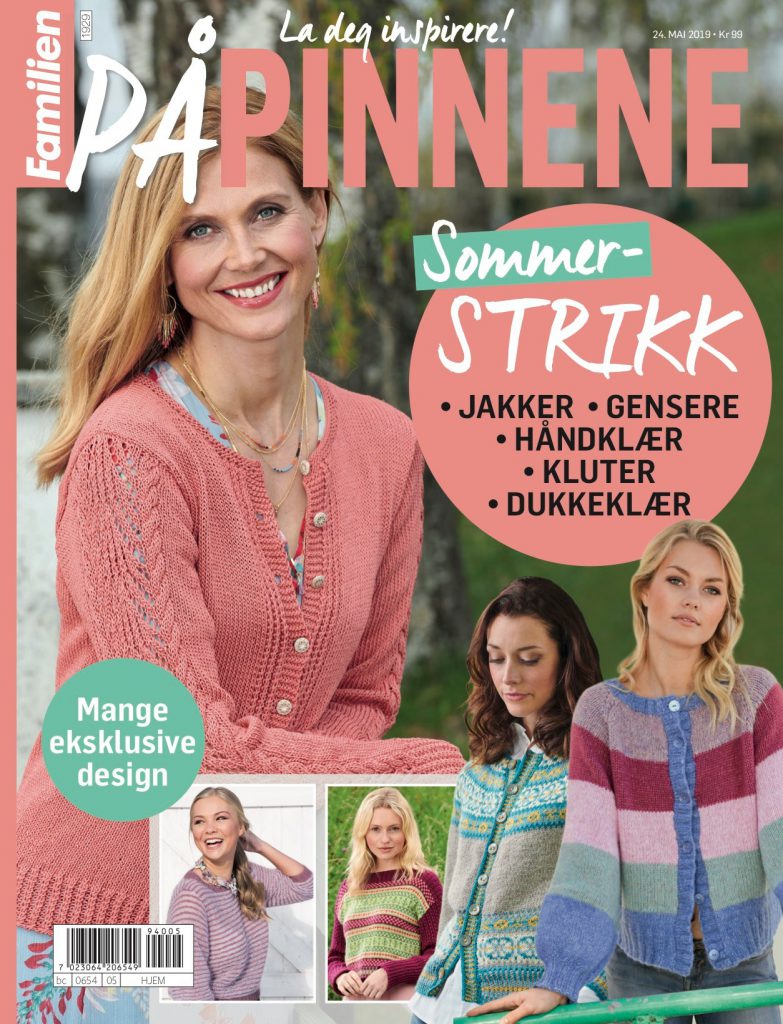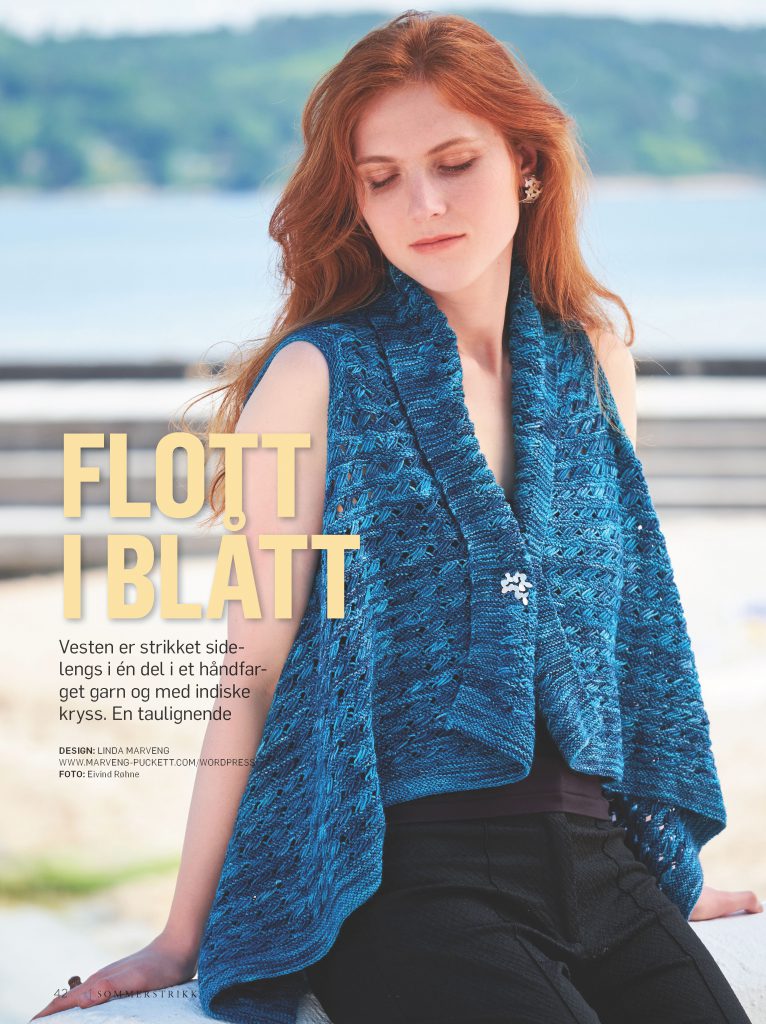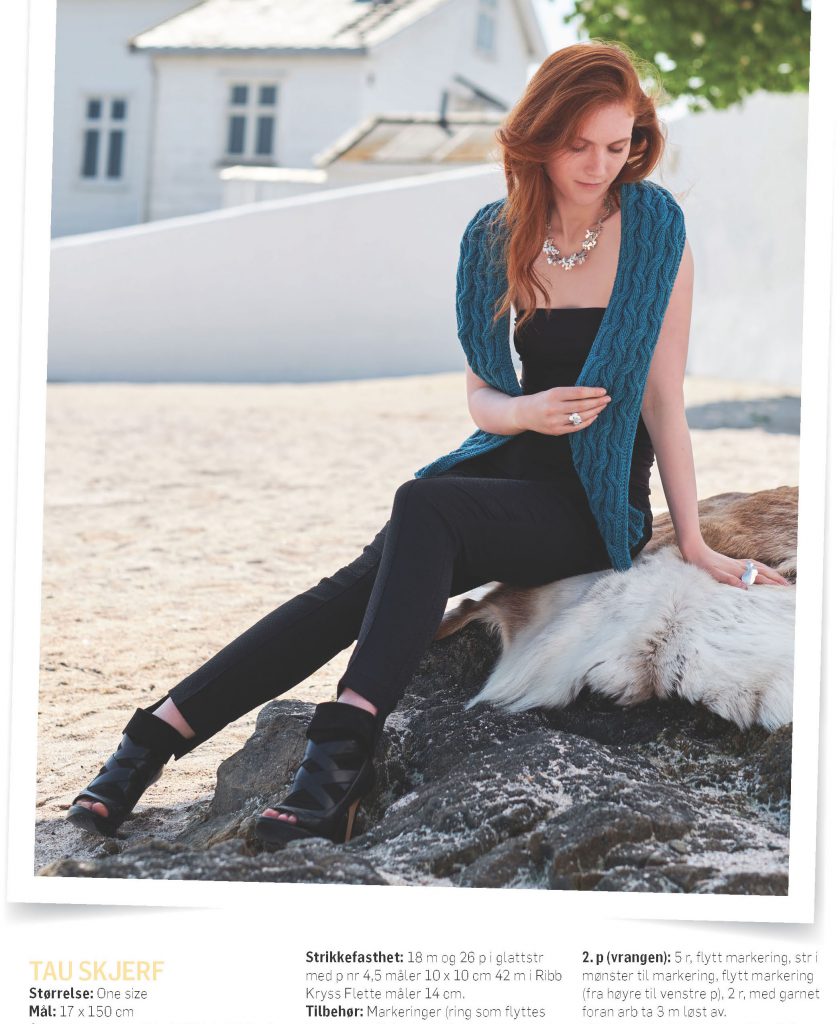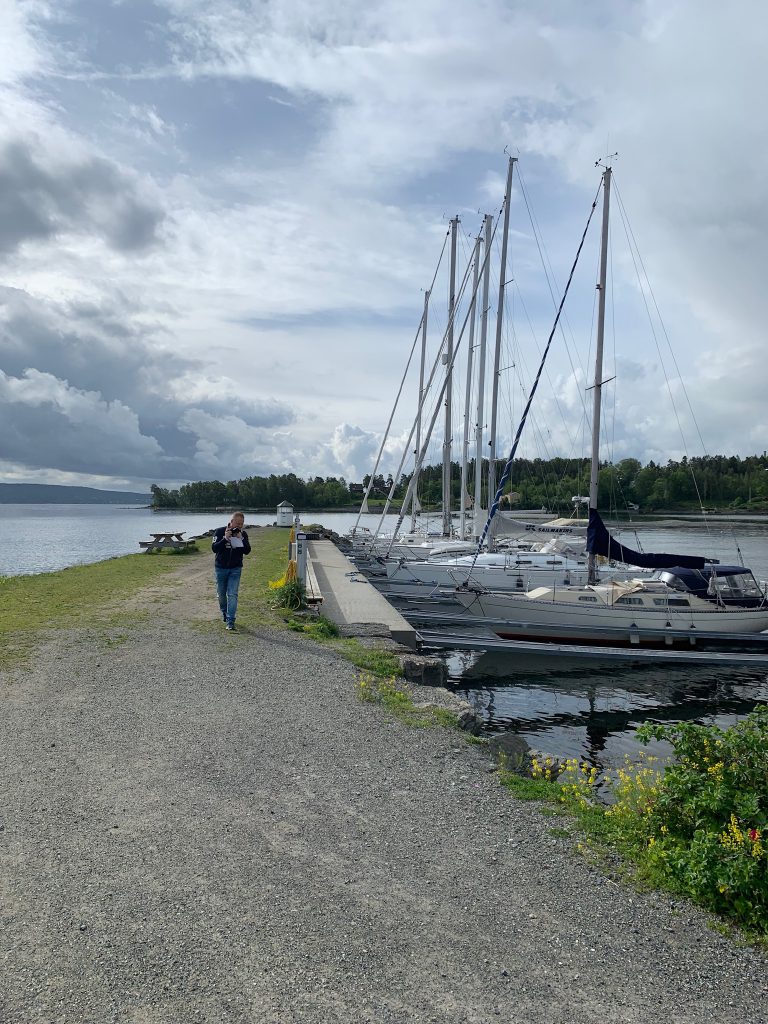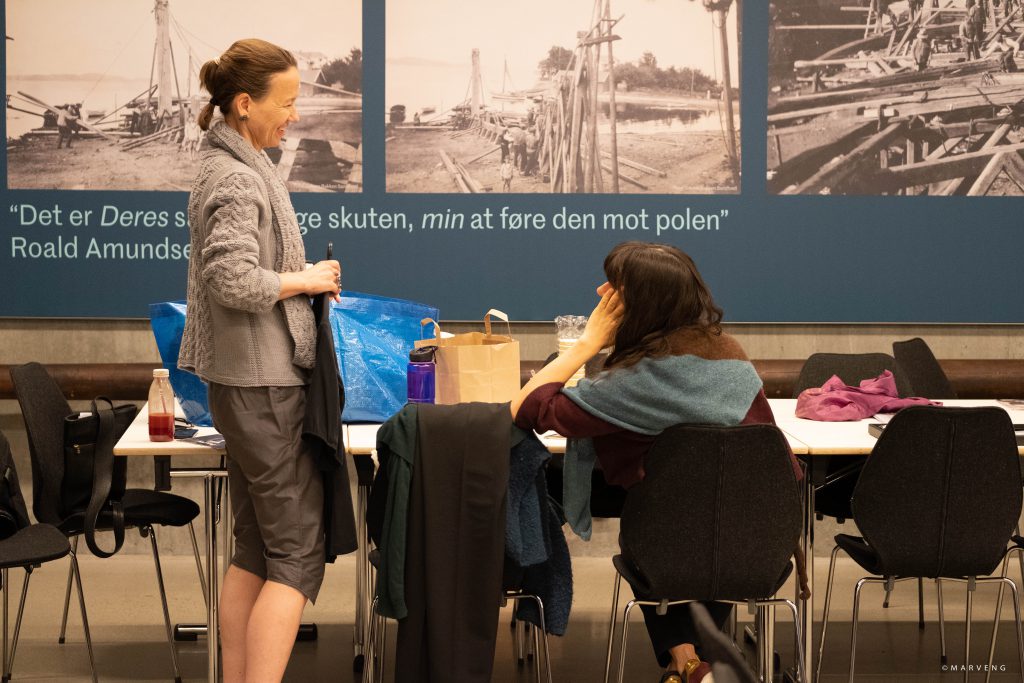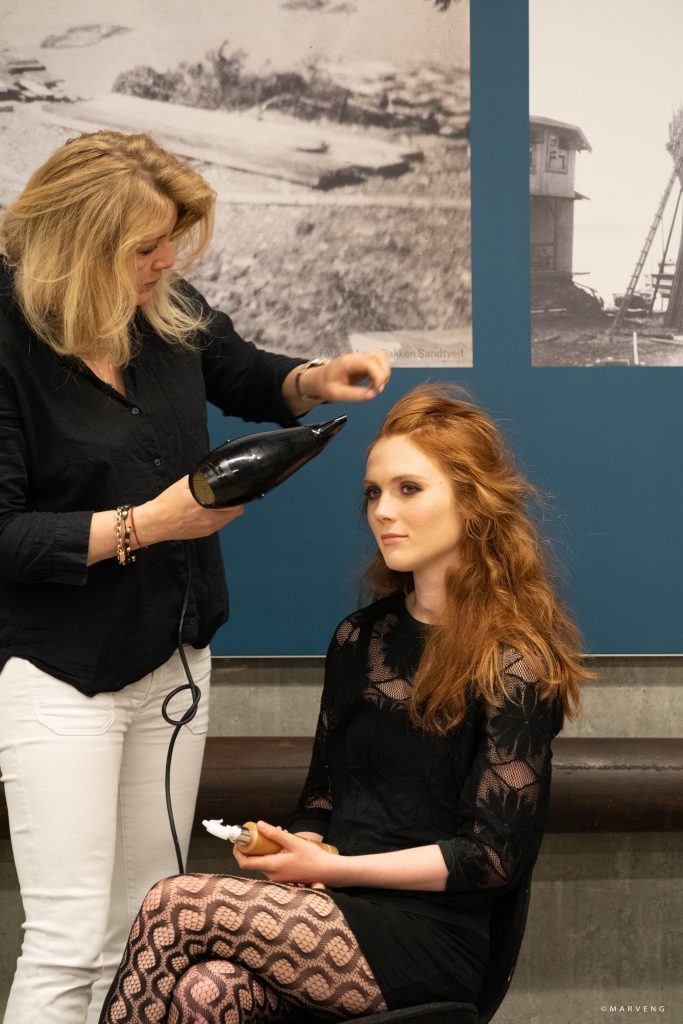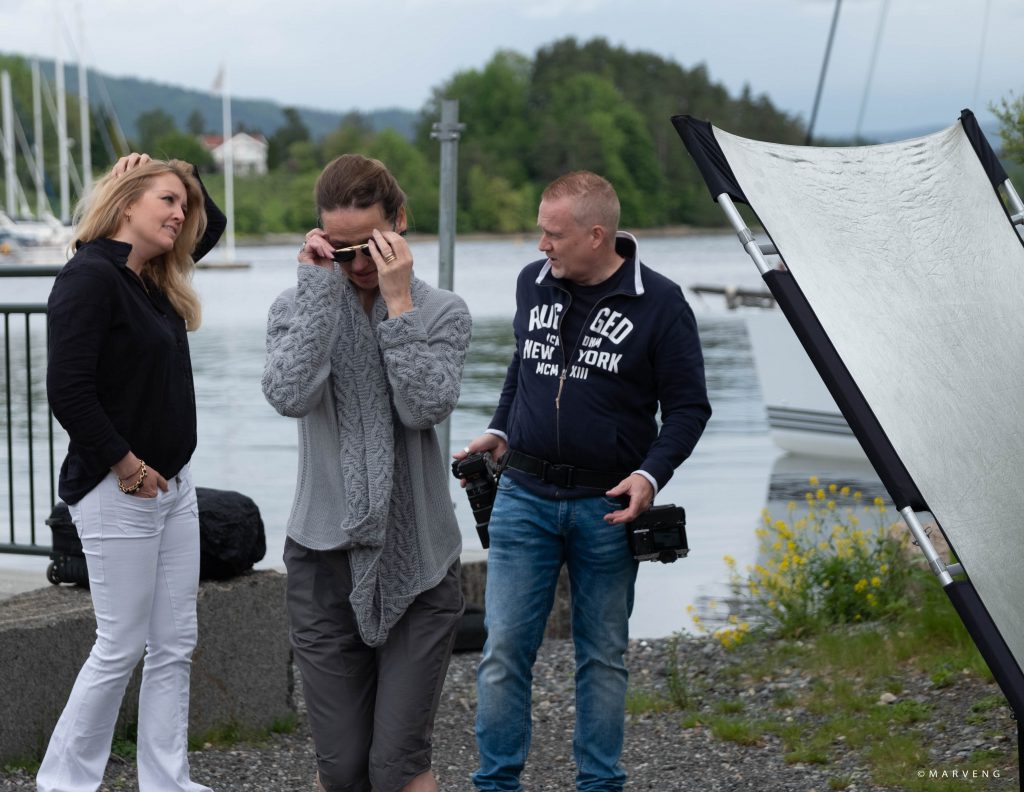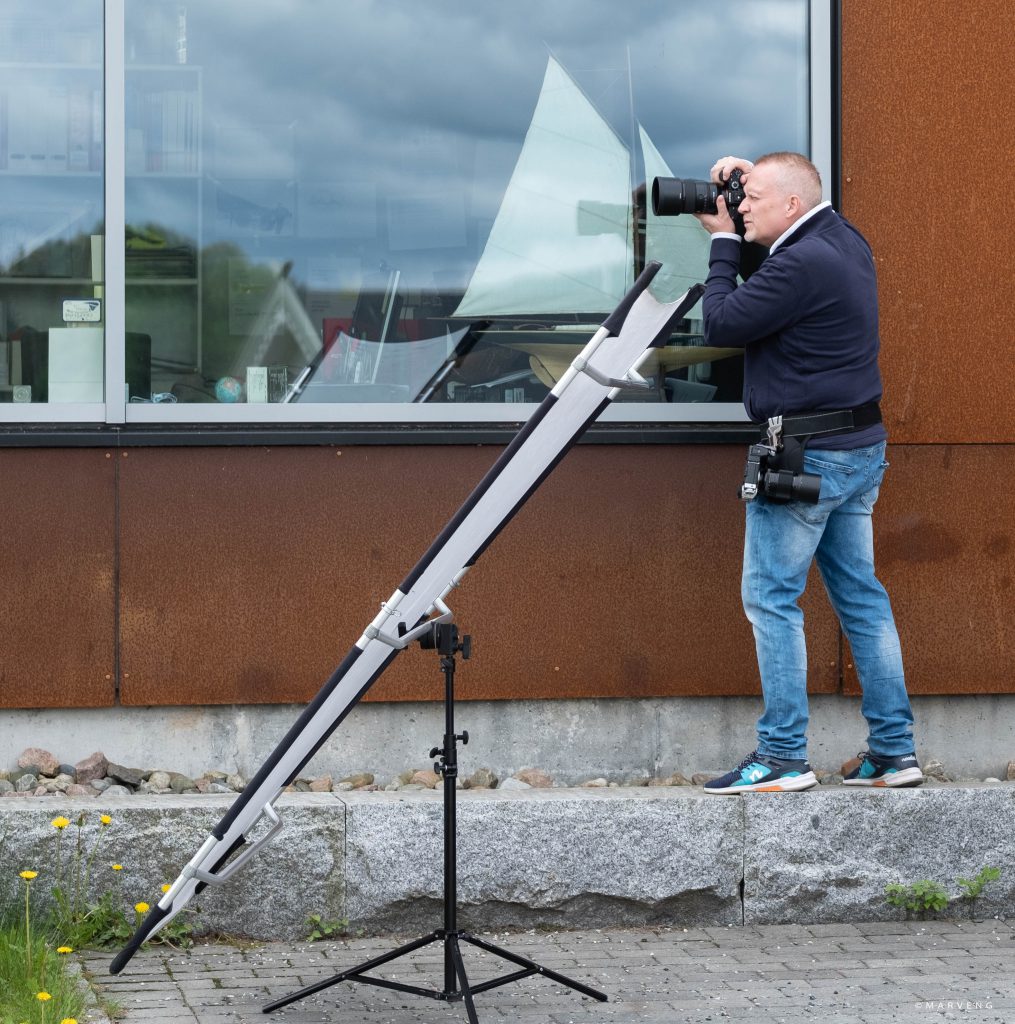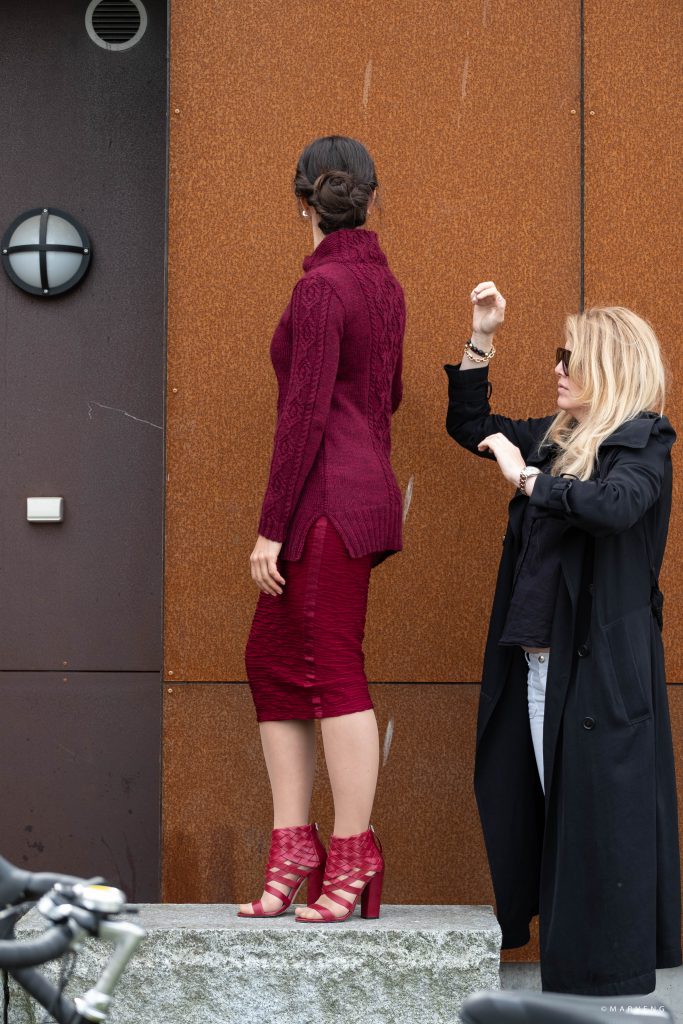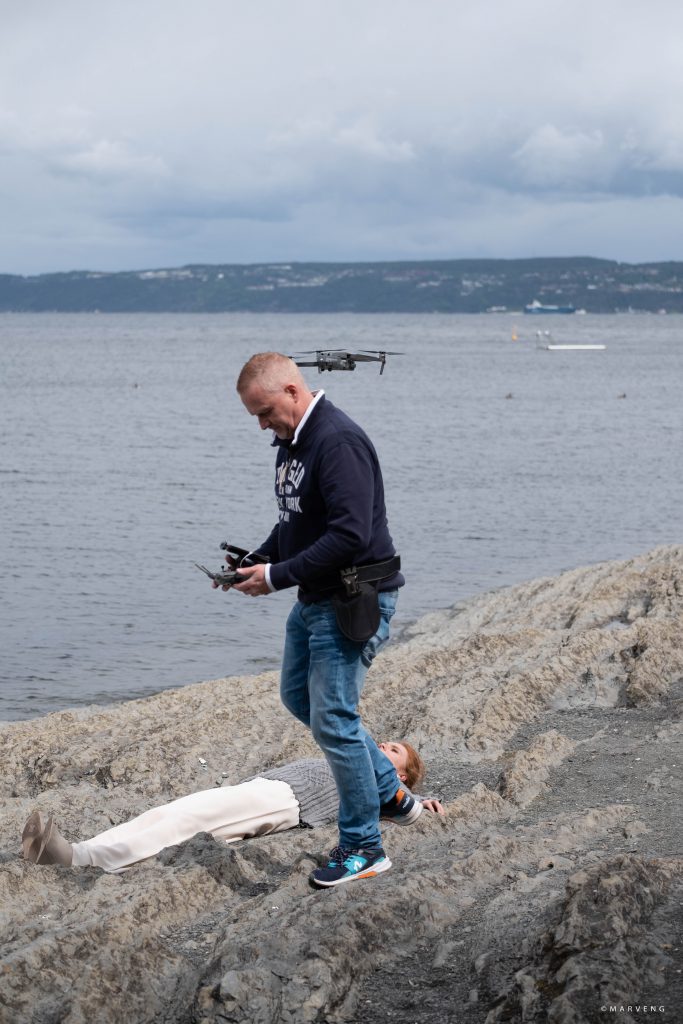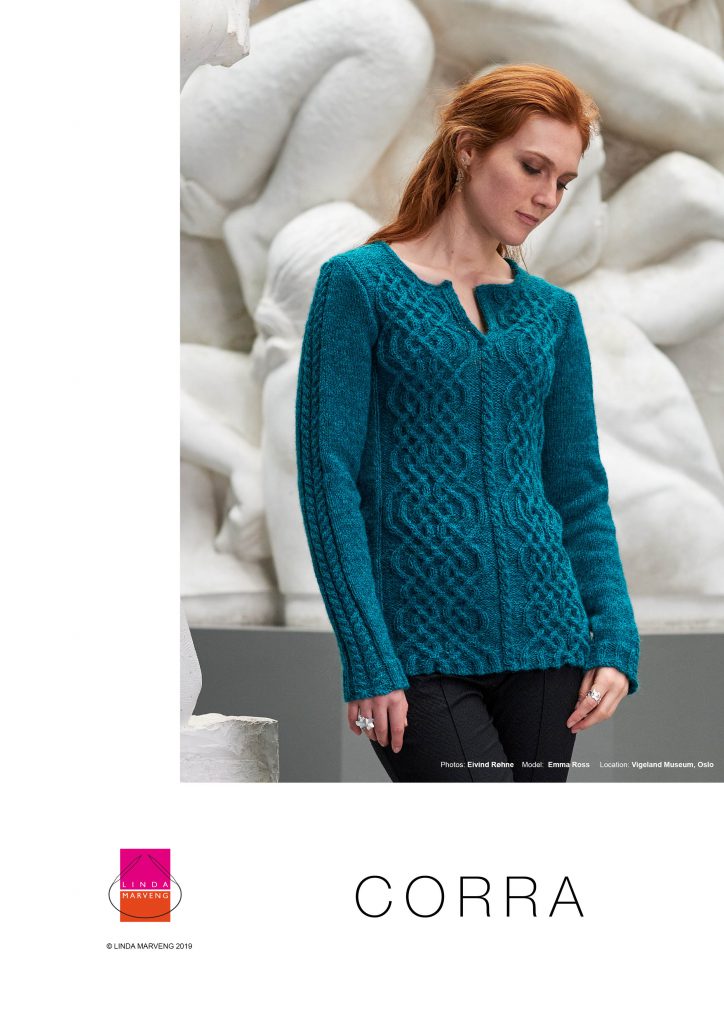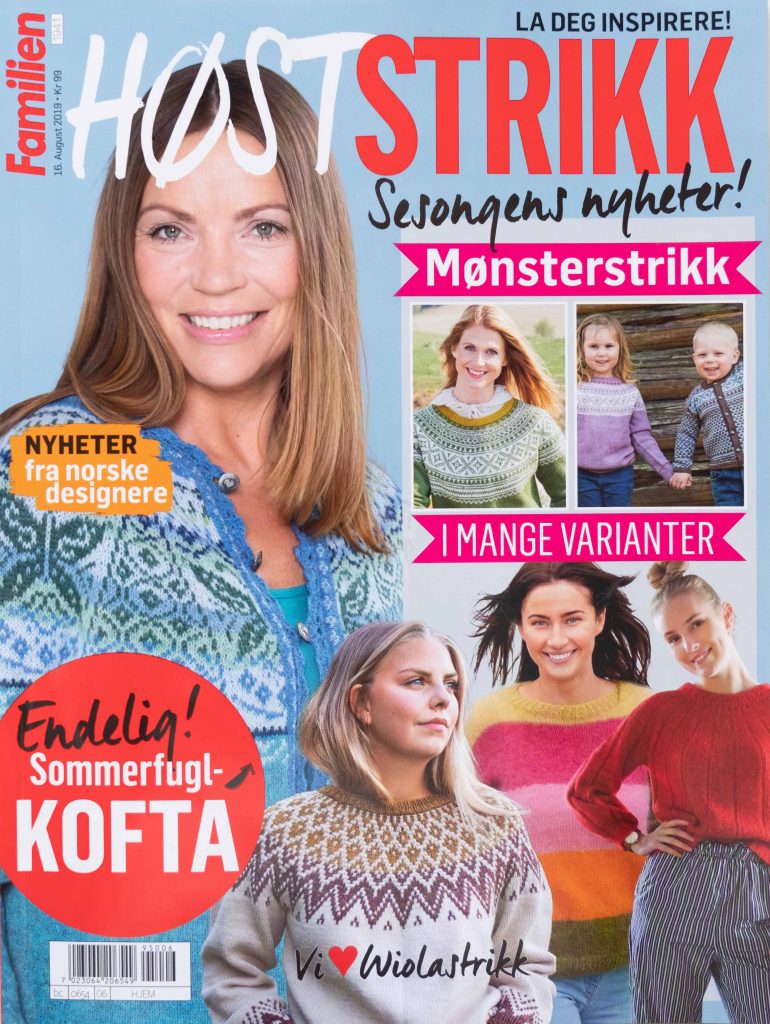 The Norwegian special magazine Høststrikk/Autumn Knits published by Familien is on sale and I am delighted to have two patterns inside it: Rørbye Cardigan and Nemetona. The magazines is filled with knitting patterns for all ages, but mainly for women as you can see from the cover. My Rørbye Cardigan modelled by Emma Ross, with hair & make up by Sissel Fylling and jewellery by Kaja Gjedebo Design, photographed by Eivind Røhne at the Vigeland Museum, is one of four designs on the back cover as well as on the editorial page.
The Norwegian special magazine Høststrikk/Autumn Knits published by Familien is on sale and I am delighted to have two patterns inside it: Rørbye Cardigan and Nemetona. The magazines is filled with knitting patterns for all ages, but mainly for women as you can see from the cover. My Rørbye Cardigan modelled by Emma Ross, with hair & make up by Sissel Fylling and jewellery by Kaja Gjedebo Design, photographed by Eivind Røhne at the Vigeland Museum, is one of four designs on the back cover as well as on the editorial page.
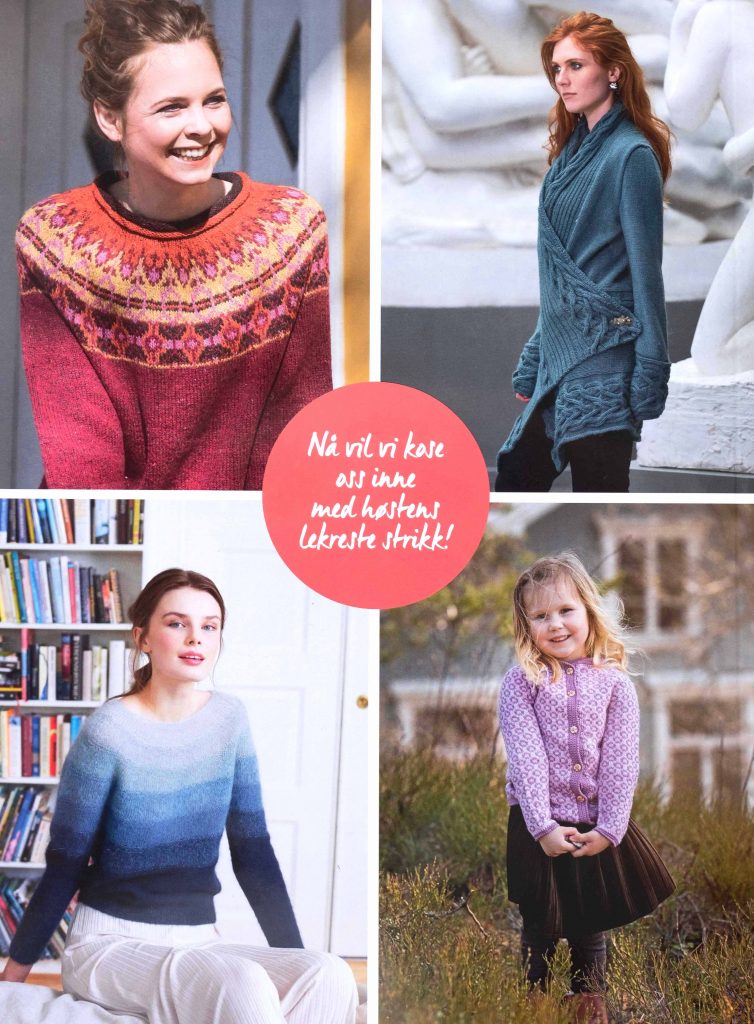 Here is the back cover, with the Rørbye Cardigan at the top, next to a design by Golden Days by Kari Hestnes. The jacket was made for Interweave knit.wear Fall/Winter 2017 and is knitted in Dale Eco Wool using 4 mm/US 6 needles. Here is my introduction: A classy and sophisticated knitted cardigan in a contemporary style. The waterfall bottom is created by knitting a sideways cable panel. To offset the cables, the body is all in stockinette stitch, with the exception of the cuff. Each sleeve begins in a sideways knitted cable panel. Leave it open, or pin the cardigan together at the front or in the side, if you prefer to wrap it all around you.
Here is the back cover, with the Rørbye Cardigan at the top, next to a design by Golden Days by Kari Hestnes. The jacket was made for Interweave knit.wear Fall/Winter 2017 and is knitted in Dale Eco Wool using 4 mm/US 6 needles. Here is my introduction: A classy and sophisticated knitted cardigan in a contemporary style. The waterfall bottom is created by knitting a sideways cable panel. To offset the cables, the body is all in stockinette stitch, with the exception of the cuff. Each sleeve begins in a sideways knitted cable panel. Leave it open, or pin the cardigan together at the front or in the side, if you prefer to wrap it all around you.
 Nemetona is featured inside the magazine at the beginning of my pages called “Fantastic Cables”. I do love the introduction: “Designer Linda Marveng is an expert on cable knitting. Here are two gorgeous designs photo grated on Emma Ross at the Vigeland Museum in Oslo.”
Nemetona is featured inside the magazine at the beginning of my pages called “Fantastic Cables”. I do love the introduction: “Designer Linda Marveng is an expert on cable knitting. Here are two gorgeous designs photo grated on Emma Ross at the Vigeland Museum in Oslo.”
 Nemetona is Celtic for goddess of all sacred places. Like a magical cable grove is each part of this pullover: Staghorn, Roman; and double cables are framed by Honeycomb pattern. The flowing longer back with its curved hem, creates a stylish contrast to the straight front. Nemetona is knitted in pieces in the divine The Fibre Co. Cumbria.
Nemetona is Celtic for goddess of all sacred places. Like a magical cable grove is each part of this pullover: Staghorn, Roman; and double cables are framed by Honeycomb pattern. The flowing longer back with its curved hem, creates a stylish contrast to the straight front. Nemetona is knitted in pieces in the divine The Fibre Co. Cumbria.
The Familien Høststrikk magazine is available at selected news agents and super markets. If you are in Norway you can buy a digital version for iPad, see www.klikk.no. If you live abroad you can order the Norwegian special magazine by e-mailing kari.bachke@egmont.com and then transfer payment into their bank account.

